[ESP/ENG] Los autos de la F1 al desnudo: McLaren se presenta bastante convencional satisfecho de los resultados obtenidos hasta el presente. / The naked F1 cars: McLaren is quite conventionally satisfied with the results obtained so far.
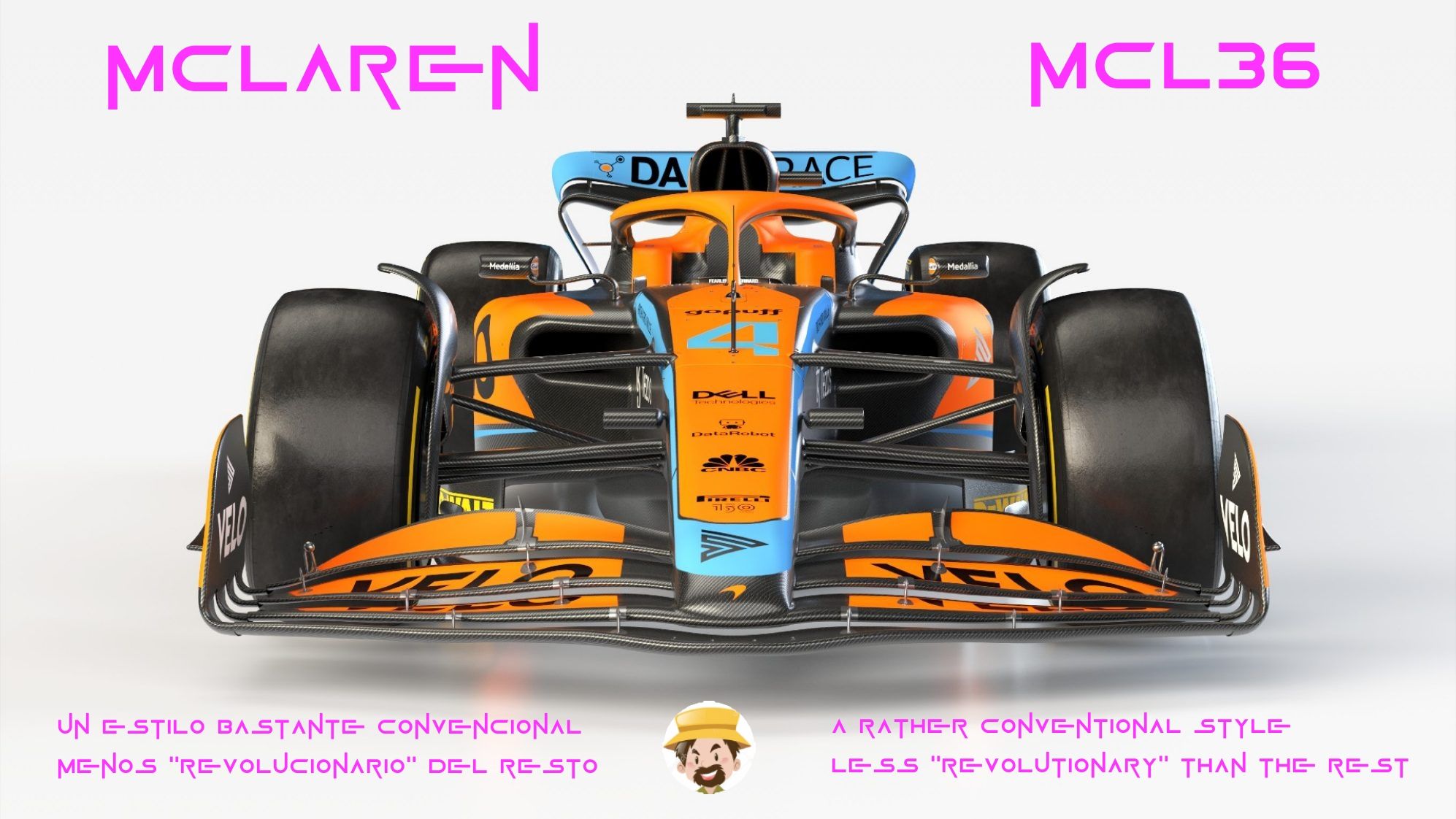
Con este artículo completo esta serie de cuatro posts dedicados a los principales equipos que sin lugar a dudas lucharan por los primeros puestos en el Mundial de Pilotos y en el Mundial de Constructores en esta temporada 2022 de Fórmula 1 que se preanuncia como una de las más emocionantes de los últumos tiempos.
Por qué elegí solo estos cuatro equipos? Muy simple, porque hacer de nuevo un análisis sobre los verdaderos cambios sería un poco repetitivo considerando que ya los he presentado durante el mes pasado en ocasión de las presentaciones oficiales de cada uno.
El tema es que esas presentaciones oficiales tuvieorn (a excepción de Aston Martin y algo de McLaren) mucho de marketing publicitario, imágenes renderizadas, uso y consumo para las redeses sociales, pero muy poco que ver con la realidad.
Muchos dirigentes e ingenieros de estos equipos no dijeron nada, otros en cambio como Red Bull tuvieron la osadía (o la sinceridad) de decir que esas imágenes presentadas no tendrían nada que ver con el verdadero monoplaza. Y fue efectivamente así: si comparamos el RB18 presentado en anticipo sobre el resto de los participantes por el equipo austríaco veremos que tiene (especialmente en la parte de los sideposts -frontones laterales- por donde va el aire que termina en los difusores) muy poco que ver con el modelo que luego se presentó en las primeras sesiones de Montmeló. Y así el resto de los equipos que de a poco va mostrando su verdadero perfil aerodinámico.
El countdown, es decir el contador con las horas que quedan para los tests oficiales en Shakir se terminó y ya se están llevando a cabo en el circuito árabe mientras que para el verdadero inicio oficial de la temporada 2022 de la F1 queda apenas una semana.
Lo que estaba escondido seguramente saldrá a la luz como lo han manifestado los directivos de Mercedes. En ese momento serán desveldas las pocas incógnitas aerodinámicas que aún quedan.
Cada uno de los candidatos presentó su modelo con características diferencias -aunque mínimamente del resto-: el RB18 de Red Bull muestra un morro muy alto y una entrada de radiador única que le dado velocidad pero le ha hecho perder algo de adherencia en las curvas, Ferrari por su lado con su F1-75, un homenaje a la F1 y a los años del equipo, ha mostrado un monoplaza con los sideposts puestos en manera opuesta a Red Bull y que ha sufrido bastante los efectos del "porpoising" penalizando ligeramente las prestaciones en el circuito catalán; mientras que Mercedes que se escondió bastante en las sesiones no oficiales del circuito catalán presentó todas sus cartas en el último día y aventajó considerablemente al resto con un auto de líneas revolucionarias, largo, delgado y con los pontones reducidos a su mínima expresión.
Mientras se calientan los motores de la Fórmula les presento entonces los verdaderos cambios experimentados en McLaren sobre su modelo el MCL36.

This article completes this series of four posts dedicated to the main teams that will undoubtedly fight for the top positions in the Drivers' and Constructors' World Championship in this 2022 Formula 1 season, which is expected to be one of the most exciting in recent times.
Why did I choose only these four teams? Very simple, because to analyze again the real changes would be a bit repetitive considering that I have already presented them during the last month on the occasion of the official presentations of each one of them.
The thing is that these official presentations had (with the exception of Aston Martin and some McLaren) a lot of advertising marketing, rendered images, use and consumption for social networks, but very little to do with reality.
Many leaders and engineers of these teams said nothing, others like Red Bull had the audacity (or sincerity) to say that these images presented would have nothing to do with the real car. And it was indeed so: if we compare the RB18 presented in advance on the rest of the participants by the Austrian team, we will see that it has (especially in the part of the sideposts - side fronts - where the air that ends in the diffusers goes) very little to do with the model that was then presented in the first sessions of Montmeló. And so the rest of the teams are gradually showing their true aerodynamic profile.
The countdown, i.e. the counter with the hours left for the official tests in Shakir is over and they are already being carried out in the Arab circuit while for the real official start of the 2022 F1 season there is only one week left.
What was hidden will surely come to light as the Mercedes management has stated. At that time, the few remaining aerodynamic unknowns will be revealed.
Each of the candidates presented their model with features that differed - albeit minimally from the rest: the Red Bull RB18 shows a very high nose and a single radiator inlet that gave it speed but made it lose some grip in the corners, Ferrari on its side with its F1-75, a tribute to F1 and to the years of the team, has shown a car with the sidepods set in the opposite way to Red Bull and that has suffered enough the effects of "porpoising" penalizing slightly the performances in the Catalan circuit; while Mercedes, which was quite hidden in the unofficial sessions of the Catalan circuit, presented all its cards on the last day and outperformed the rest with a car with revolutionary lines, long, slim and with the pontoons reduced to their minimum expression.
While the Formula engines are warming up, I present to you the real changes experienced by McLaren on its MCL36 model.
Una carrocería convencional vista lateralmente con algunos detalles aerodinámicos de interés. / A conventional bodywork viewed from the side with some aerodynamic details of interest.
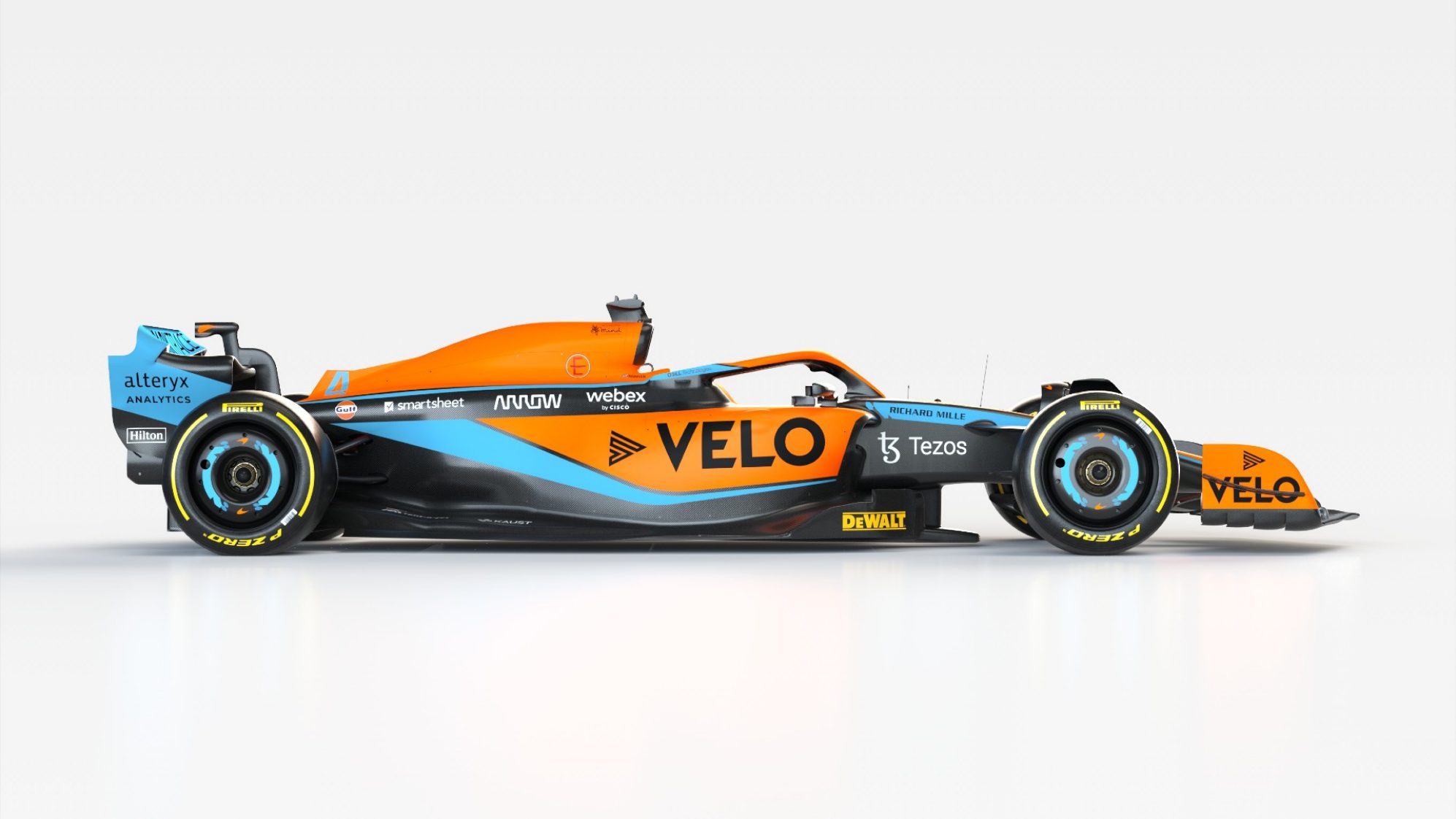
McLaren ha hecho ver un monoplaza que se diferencia bastante de sus competidores directos como Ferrari, Mercedes y Red Bull, con líneas aerodinámicas menos revolucionarias, pero no por ello menos efectivas, algunas de las cuáles tienen similitud con Aston Martin y Haas. Veamos cuáles son.
Si observamos el auto lateralmente y lo comparamos con el AMR 22 de Aston Martin veremos que las barras del MCL36 de McLaren tienen no tienen un corte muy pronunciado y se van estrechando de a poco en la parte trasera hasta darle una forma que -si usamos nuestra imaginación a pleno. nos hace recordar a la gaseosa más conocida en el mundo.
Así como el resto de los equipos han tratado de desviar el flujo de aire a través de estas barras laterales y hacerlo converger sobre los difusores cada uno de una manera distinta, McLaren ha tratado de hacer expandir el mismo llenando un área de baja presión creada por el espacio expandido, sin intentar el efecto de doble suelo como en el caso de Aston Martin y sin necesidad de inclinar los radiadores tan horizontalmente como lo han hecho otros equipos.
Esto crea un gran volumen para que el flujo de aire se expanda, acelerando el flujo a lo largo de los lados, ya que se apresura a llenar el área de baja presión creada por el espacio expandido. Las superficies exteriores del suelo del coche de lanzamiento no eran, evidentemente, las que se utilizarán en las carreras, ya que no presentaban ninguno de los giros y cambios de línea que se verán en los reales y que ayudan a acelerar aún más el flujo.
Todo el misterio de las prestaciones de los autos en esta nueva y revolucionaria temporada de F1 parece girar en torno a estos elementos: barras laterlaes, frontones o sideposts por un lado y radiadores y difusores por el otro. La manera en como circule el aire y el efecto que tenga en enfriar los pneumáticos parecería ser la incógnita que desvela a técnicos y mecánicos.

McLaren has made a car that is quite different from its direct competitors such as Ferrari, Mercedes and Red Bull, with less revolutionary aerodynamic lines, but no less effective, some of which have similarities with Aston Martin and Haas. Let's see what they are.
If we look at the car from the side and compare it with Aston Martin's AMR 22, we will see that the McLaren MCL36's bars are not very pronounced and taper gradually at the rear to give it a shape that -if we use our imagination to the fullest- reminds us of the world's best-known soft drink.
Just as the rest of the teams have tried to divert the airflow through these sidebars and make it converge on the diffusers each in a different way, McLaren has tried to make it expand by filling a low pressure area created by the expanded space, without trying the double floor effect as in the case of Aston Martin and without the need to tilt the radiators as horizontally as other teams have done.
This creates a large volume for the airflow to expand, accelerating the flow along the sides as it rushes to fill the low-pressure area created by the expanded space. The outer floor surfaces of the launch car were clearly not those that will be used in racing, as they did not feature any of the twists and line changes that will be seen in the real thing and which help to further accelerate the flow.
The whole mystery of the performance of the cars in this new and revolutionary F1 season seems to revolve around these elements: sidepods, sidepods or sideposts on the one hand and radiators and diffusers on the other. The way the air circulates and the effect it has on cooling the tires seems to be the unknown that unravels technicians and mechanics.
McLaren ha optado por un estilo de carrocería similar al de Haas lo cuúl de por si es bastante extraño considerando las escasas prestaciones del equipo estadounidense. / McLaren has opted for a body style similar to that of Haas, which in itself is quite strange considering the poor performance of the American team.

Visto desde el alto el nuevo MCL36 presenta ciertas analogías más con Haas que con Aston Martin especialmente n la parte trasera, donde McLaren ha prescindido de la disposición convencional de pull-rod por push-rod (estos términos están por los dos tipos de suspensiones imperante en la Fórmula 1) aunque se ve bastante menos ancho con una sección más ancha en la cubierta del motor por detrás del aro antivuelco que se extiende hastante hacia atrás en el monoplaza.
La "pull rood" que es la suspensión que montó Red Bull el año pasado, es la suspensión montada en su tren trasero mientras que la "push road" es la tradicional montada sobre el tren delanteroy ha sido la habitual en los últimos años.
Como la mayor parte de los equipos McLaren ha prescindido de la disposición convencional de pull-rod por push-rod, lo que ha llevado al equipo a una revaluación acerca de la disposición de los difusores que con la normativa anterior, eran colocados abajo para maximizar el flujo de aire a través del suelo.

Seen from above the new MCL36 has certain analogies more with Haas than with Aston Martin especially at the rear, where McLaren has dispensed with the conventional pull-rod arrangement for push-rod (these terms are for the two types of suspension prevailing in Formula 1) although it looks rather less wide with a wider section in the engine cover behind the roll hoop that extends farther back in the car.
The pull rod, which is the suspension that Red Bull fitted last year, is the rear-mounted suspension while the push road is the traditional front-mounted suspension and has been the standard in recent years.
Like most teams McLaren has dispensed with the conventional pull-rod arrangement for push-rod, which has led the team to a re-evaluation of the arrangement of the diffusers, which under the previous regulations were placed low to maximize airflow through the floor.
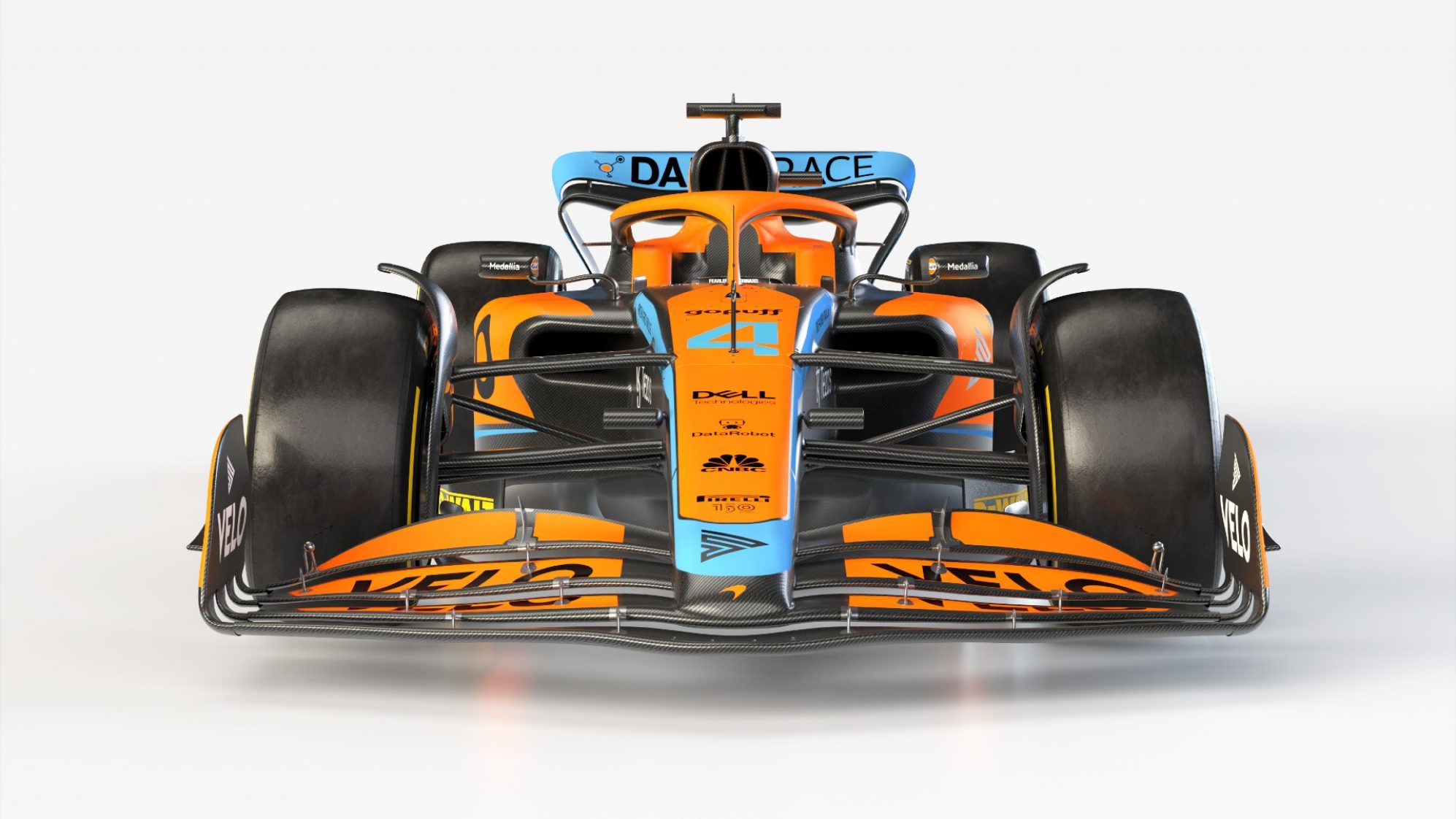
 | 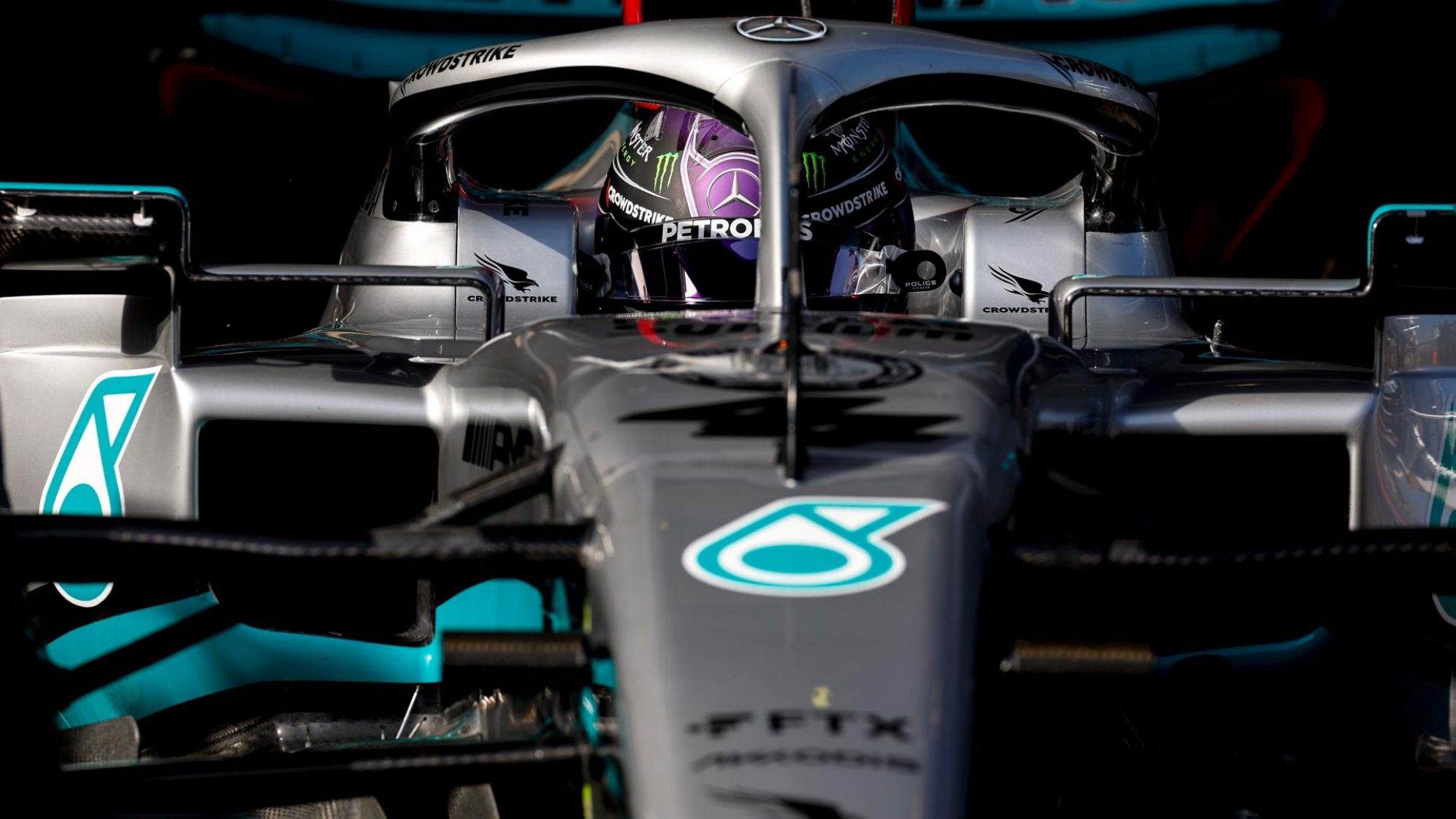 | 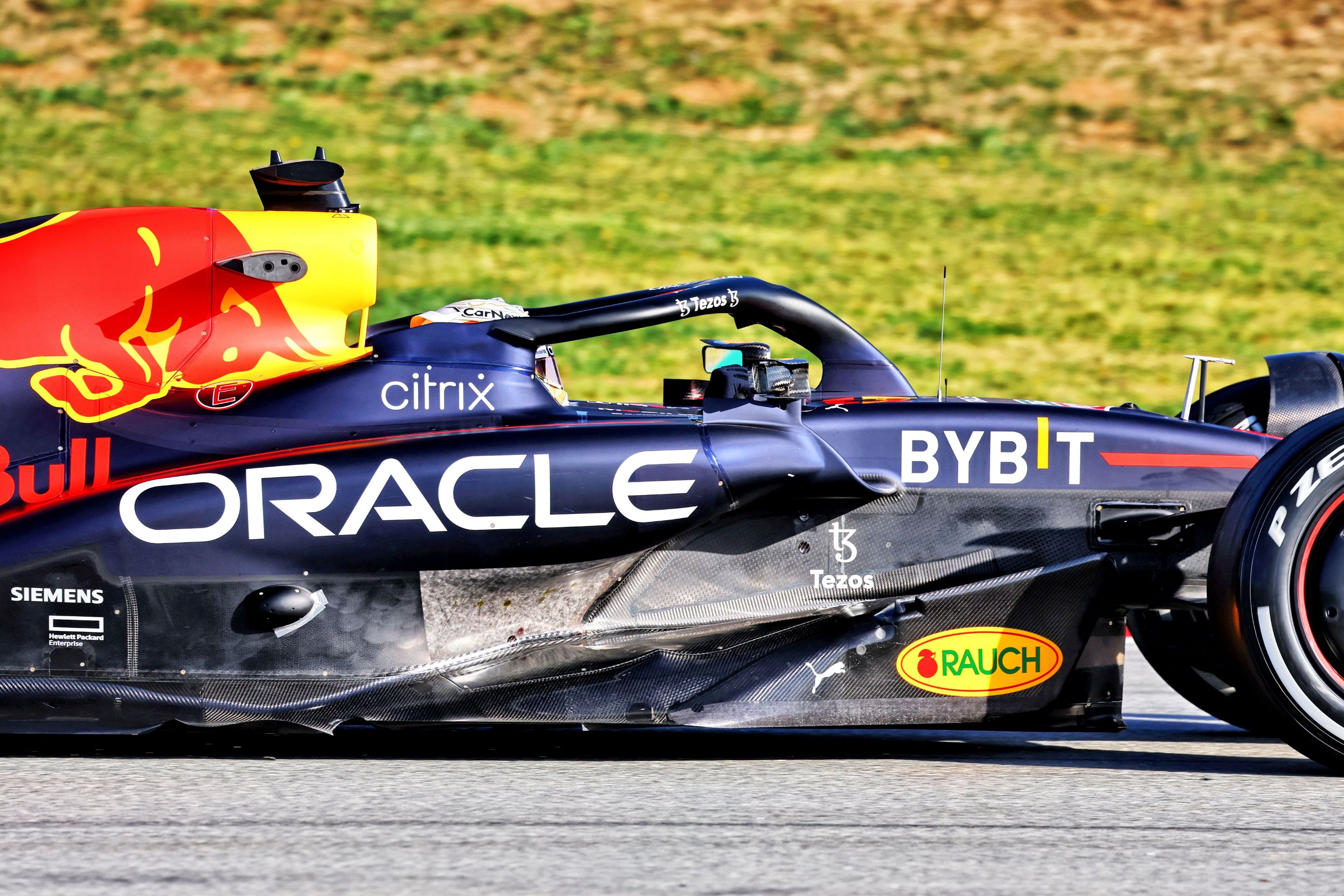 |
|---|


La parte inferior del banner de la firma corresponde al badget elaborado por el equipo de @hivebuzz. Mi agradecimiento a ellos y en particular a @arcange.
The lower part of the signature banner corresponds to the badget made by the @hivebuzz team. My thanks to them and in particular to @arcange.










Comments